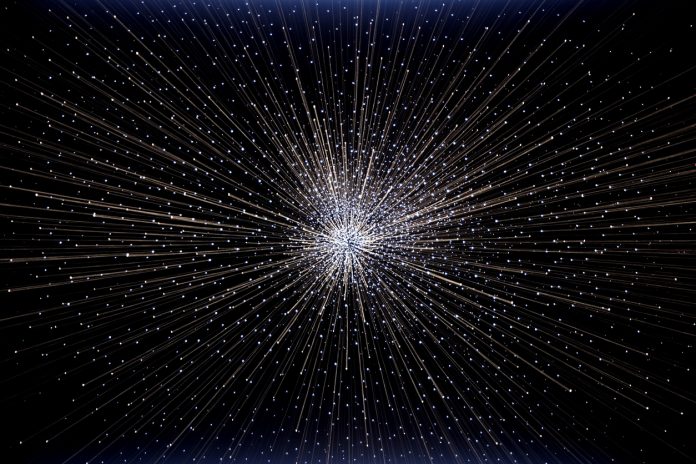An international team of astronomers has discovered the mysterious origins of heavy elements in our universe by examining cosmic event GRB230307A
The researchers, led by Clemson University astrophysicist Dieter Hartmann, have provided evidence for creating rare heavy elements following a cataclysmic event triggered by the merger of two neutron stars.
GRB230307A cosmic event
The cosmic event, GRB230307A, is the second brightest gamma-ray burst (GRB) observed in the past half-century, exceeding typical bursts by a staggering 1,000-fold.
Initially detected by NASA’s Fermi Gamma-Ray Space Telescope on March 7, 2023, GRB230307A sparked intense interest among scientists worldwide.
Employing a multitude of space- and ground-based telescopes, including NASA’s groundbreaking James Webb Space Telescope, astronomers tracked the burst’s evolution. Their efforts pinpointed the source of the gamma-ray burst in a galaxy located a billion light-years away from Earth, unravelling a remarkable cosmic spectacle.
Kilonova
The merger of two neutron stars culminated in the formation of a kilonova, an event characterised by an explosive release of energy. This kilonova not only produced a light display but also left traces of tellurium, one of the rarest elements on our planet.
For Hartmann and his colleagues, this breakthrough represents a crucial step towards unravelling the enigma surrounding the source of heavy elements in the cosmos. While the universe’s early stages birthed primarily hydrogen and helium during the Big Bang, the origins of heavier elements remain elusive.
The role of stars in the cosmic alchemy
Stars play a pivotal role in cosmic alchemy. However, forming elements heavier than iron poses a challenge due to the diminishing energy available in stellar environments.
Neutron star mergers are one of the universe’s most violent phenomena. These cataclysmic events, characterised by the collision and fusion of neutron stars, unleash energy capable of synthesising heavy elements through rapid neutron capture processes (r-process).
The universe’s chemical evolution
GRB230307A is different because of its peculiar nature. While most gamma-ray bursts are associated with specific stellar events such as supernovae, this burst exhibited anomalous features indicative of a neutron star merger. Despite its extended duration, the burst’s afterglow displayed telltale signs of a kilonova, marked by a distinctive colour transition from blue to red.
Theoretical predictions had long suggested that kilonovas should use elements like tellurium. However, these predictions were validated when the James Webb Space Telescope detected a spectral line associated with tellurium.
Collaborating with researchers from myriad institutions, Hartmann and his team have expanded our understanding of the cosmos. Combining cutting-edge observational data with advanced theoretical models has unravelled the intricate processes controlling the universe’s chemical evolution.











